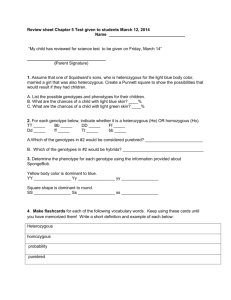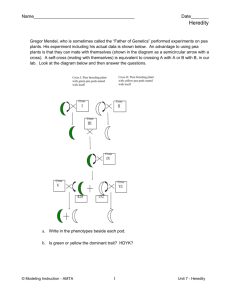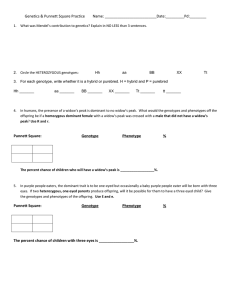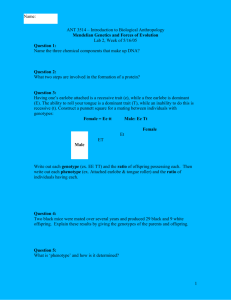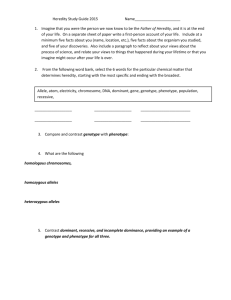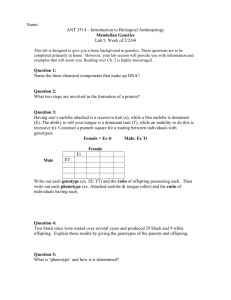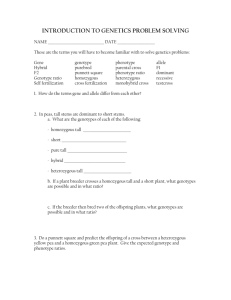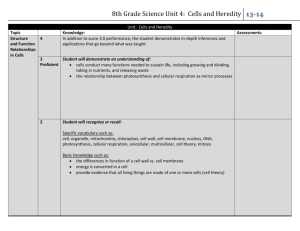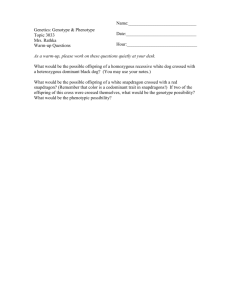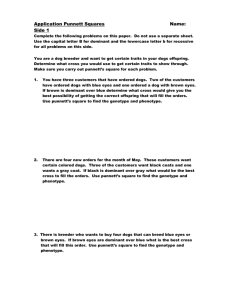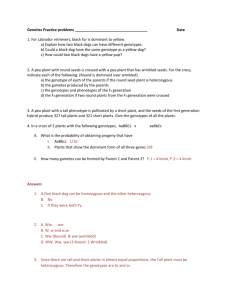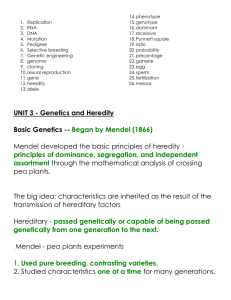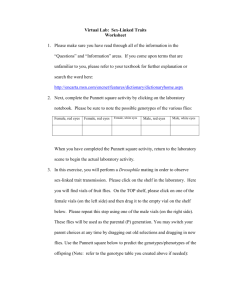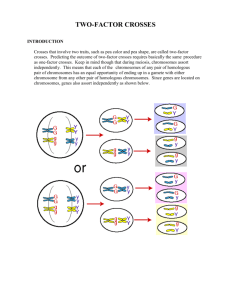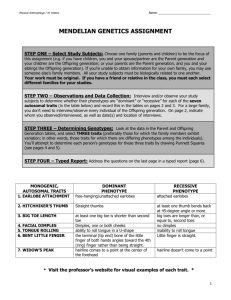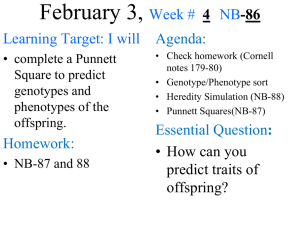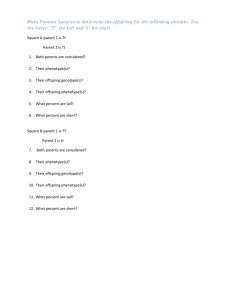File
advertisement
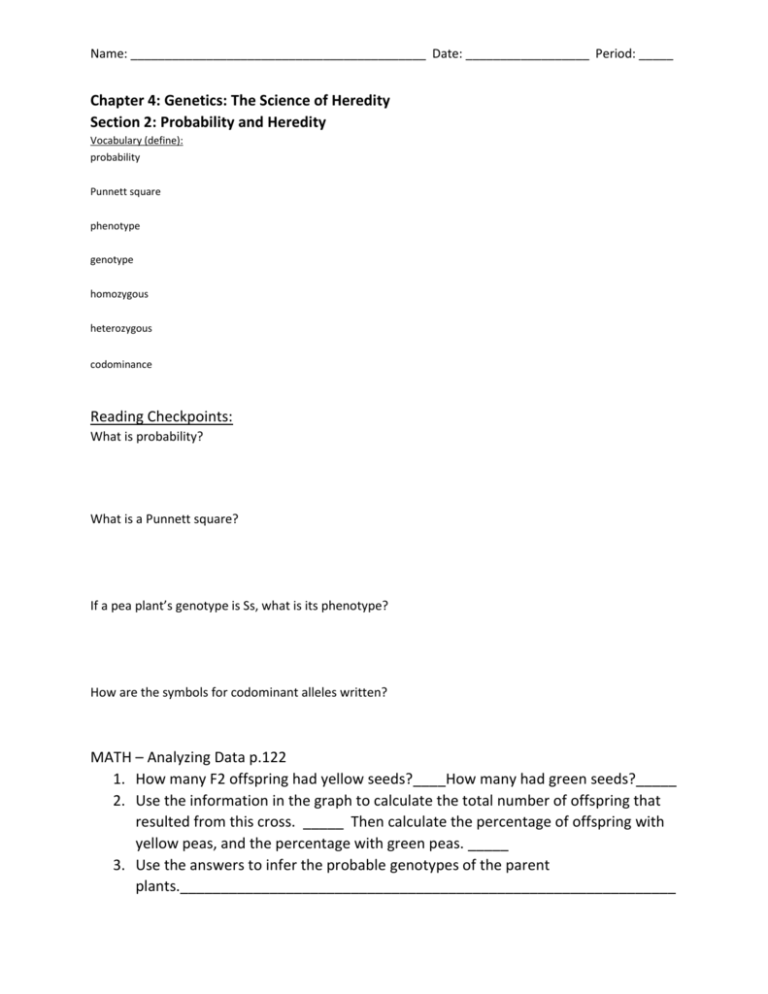
Name: ___________________________________________ Date: __________________ Period: _____ Chapter 4: Genetics: The Science of Heredity Section 2: Probability and Heredity Vocabulary (define): probability Punnett square phenotype genotype homozygous heterozygous codominance Reading Checkpoints: What is probability? What is a Punnett square? If a pea plant’s genotype is Ss, what is its phenotype? How are the symbols for codominant alleles written? MATH – Analyzing Data p.122 1. How many F2 offspring had yellow seeds?____How many had green seeds?_____ 2. Use the information in the graph to calculate the total number of offspring that resulted from this cross. _____ Then calculate the percentage of offspring with yellow peas, and the percentage with green peas. _____ 3. Use the answers to infer the probable genotypes of the parent plants._____________________________________________________________ Name: ___________________________________________ Date: __________________ Period: _____ Chapter 4: Genetics: The Science of Heredity Section 2: Probability and Heredity ASSESSMENT 1. a. What is probability? b. If you know the parents’ alleles for a trait, how can you use a Punnett square to predict the probable genotypes of the offspring? ________________________________________________________________________ When you think of the traits of the parent plants, why is this result surprising? c. A pea plant with round seeds has the genotype Rr. You cross this plant with a wrinkledseed plant, genotype rr. What is the probability that the offspring will have wrinkled seeds? (Draw a Punnett square to back up your conclusion.) 2. a. Define genotype and phenotype above in the vocabulary section. b. Explain how two organisms can have the same phenotype but different genotypes. Give an example. c. A pea plant has a tall stem. What are the possible genotypes? 3. a. What is codominance? Give an example of codominant alleles and explain why they are codominant._____________________________________________________________ b. What is the phenotype of a chicken with the genotype FBFW? 4. A scientist crossed a tall pea plant with a short pea plant. Of the offspring, 13 were tall and 12 were short. Write the ratio of each phenotype to the total number of offspring. Express the ratios as fractions. ______________________________________________________________________________ ______________________________________________________________________________ 5. Use the fractions to calculate the percentage of the offspring that were tall and the percentage that were short. ______________________________________________________________________________ ______________________________________________________________________________



